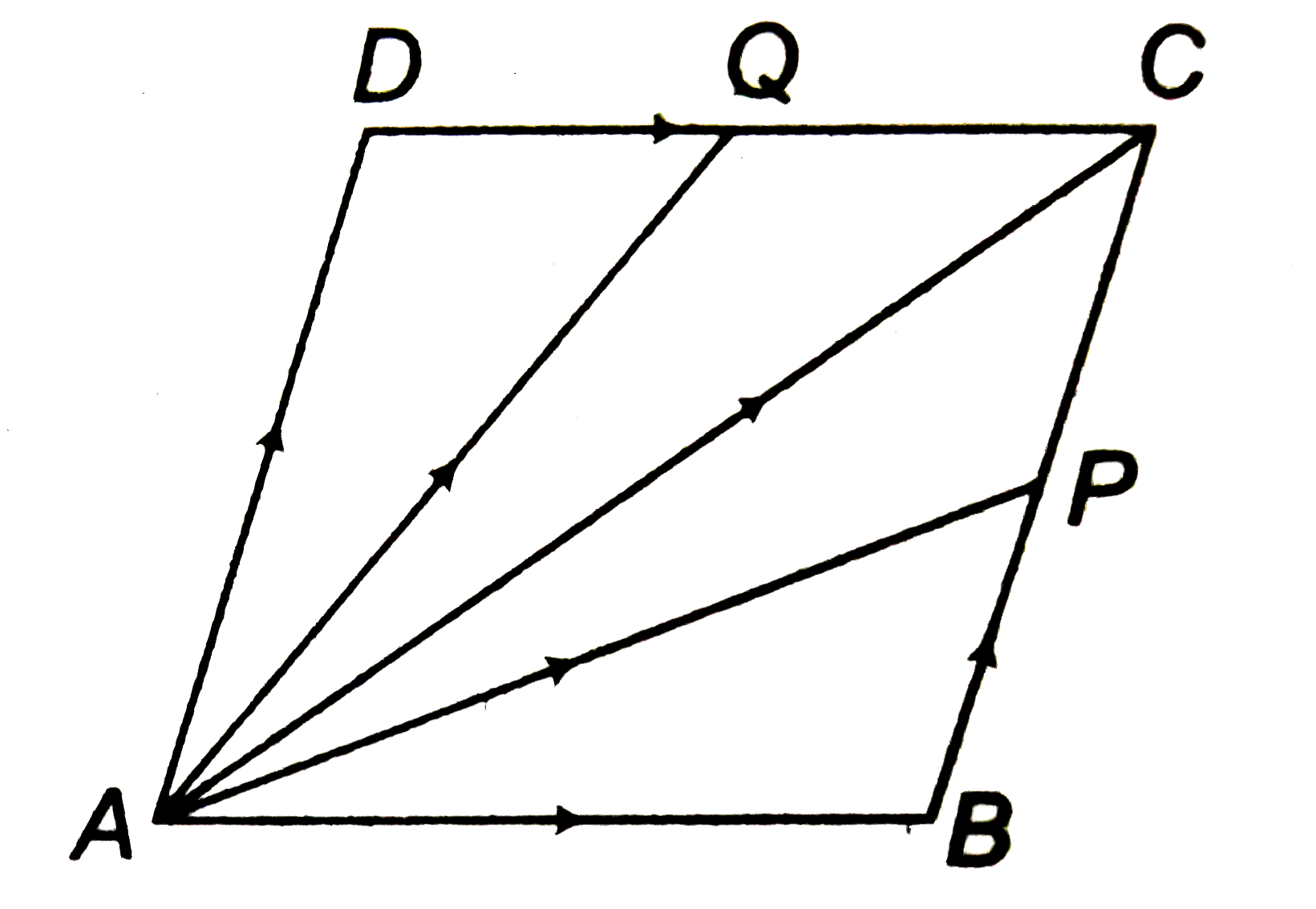If P and Q are the middle points of the sides BC and CD of the parallelogram ABCD, then AP+AQ is equal toSolution in Gujrati
AC
12AC
23AC
32AC
The correct Answer is:D
AP=AB+BP=AB+12BC=AB+12AD . . . (i)
AQ=AD+DQ=AD+12DC=AD+12AB . . . (ii)

By eqs. (i) and (ii), we get
AP+AQ=32(AB+AD)
=32(AB+BC)=32AC.
Similar Questions
ABCD is a parallelogram. P and Q are mid points of BC & CD. Find the area of ΔAPQ if area of ΔABC is 12.
View SolutionABCD is parallelogram. If LandM are the middle points of BC and CD, then ¯¯¯¯¯¯AL+¯¯¯¯¯¯¯AM equals
View SolutionIn a parallelogram ABCD, P is a point on side AD such that 3AP = AD and Q is a point on BC such that 3CQ = BC. Prove that : AQCP is a parallelogram.
View SolutionABCD is a square. P, Q and Rare the points on AB, BC and CD respectively, such that AP = BQ = CR. Prove that:
PB = QC
View SolutionABCD is a square. P, Q and Rare the points on AB, BC and CD respectively, such that AP = BQ = CR. Prove that:
PQ = QR
View SolutionIn parallelogram ABCD, point E and F is the mid point of sides BC and CD. Parallelogram ABCD and DeltaAEF What will be the ratio of the areas of
View SolutionABCD is a parallelogram . If P and Q are the mid-points of [BC] and [CD] respectively, show that vec AP + vec AQ=
View SolutionABCD is a square. P, Q, R, S are points on the sides AB. BC, CD, DA respectively such that AP = BQ = CR = DS. What is angleSPQ equal to ?
View Solution
